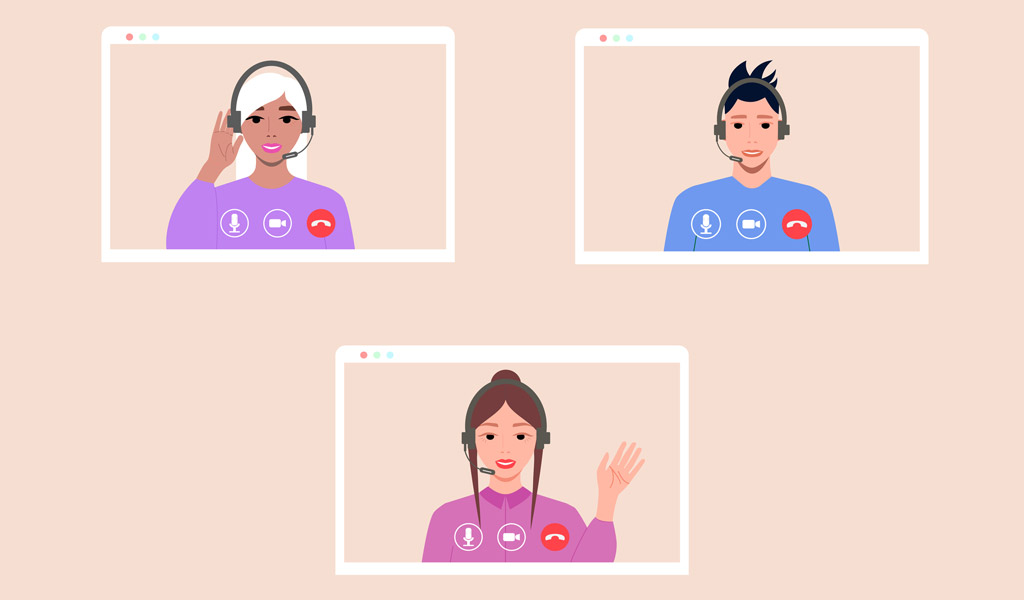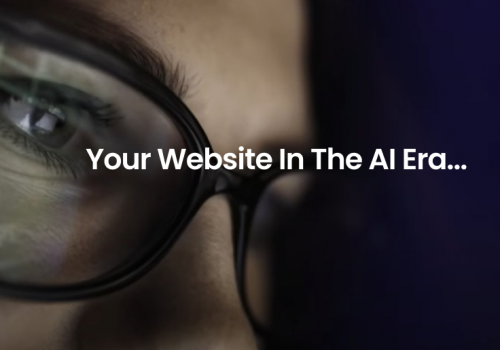Successful Zoom Sales. This time last year, Zoom was a modestly successful video conferencing app. A few people had heard of it, but your average person on the street would have greeted you with a blank face if you asked if they used Zoom. One year on, the picture couldn’t be more different. On January 1, 2020, there were close to 38,000 daily active users (DAU) on the Zoom app across iOS and Android devices in the UK. By November 19, 2020, this number had skyrocketed to an eye-watering 1.686 million DAU. The picture is much the same for the rest of the world, with Zoom becoming the video conferencing app of choice for individuals and businesses in the US, Europe, the Middle East, and Asia.
Zoom was in the right place at the right time. With countries faced with widespread social distancing orders and lockdowns, businesses had to shift how they operated. Meetings and sales demo sessions normally held face to face were suddenly forced online – and Zoom was the natural choice.
However, this change happened so fast that companies didn’t have time to plan how to execute this shift for maximum success. There are fundamental differences between holding meetings online and in person. And when it comes to sales, any deviation from ideal conditions can cause you to lose a deal. After a year of using Zoom as a sales video conferencing tool, we have a much better picture of what works and what doesn’t. That’s why we’ve created this guide on how to run a successful sales demo Zoom call. Let’s take a look.
Why You Should Use Zoom to Close Deals Faster
Many companies started using Zoom almost on accident. The app became so popular so quickly that even people who were unsure whether it was the right fit made the jump. If the people you needed to talk to were using Zoom, you needed to use Zoom. However, this doesn’t mean that Zoom doesn’t come with many benefits for sales teams. Here are the top benefits of using Zoom to connect with customers and prospects.
Face to Face Communication
In sales, being face-to-face with customers has a significant impact on your success in closing the deal. This is especially true when you’re selling more expensive products and services where there is typically a longer sales cycle. When you can see a prospect face to face, they are more likely to empathize with you. You can more easily build a rapport, display a warm and friendly demeanor, and create a natural flow in the conversation. Over a phone call, it’s not always easy to tell whether someone has finished speaking or they’re just pausing to think of their next point. You risk interrupting prospects unnecessarily and potentially causing some annoyance – not a great situation to be in when you’re asking for their money.
You can also gauge their reactions to your sales pitch more easily over a video call. You’ll know immediately whether you said something they like – like a feature of your product that could solve a problem they’re experiencing. Their face might light up, or they start listening more intently. When you pick up on this, you can focus more heavily on that feature and dedicate more time to it before moving on to your other product features. Equally, you can also detect when you’ve said something they don’t like so much and change tack from there.
Recorded Introductions
Instead of firing off a simple email, you can create a recorded video introduction for added impact. Record this video introduction with Zoom and then send that as your introduction over a wordy email that will likely get lost in their inbox. It’s more personable and helps your business stand out from the crowd. Your recipients will also be more likely to respond to a video introduction than an email – you took your time making it, and that warrants a real reply.
Virtual Backgrounds
Virtual backgrounds are one of Zoom’s most popular features and with good reason. You can choose anything for your virtual background. You can pick a background that reflects professionalism, like a swanky office or a minimalist library. Or you can choose a fun and silly background that shows off your sense of humor and likability.
Ease of Use
One of Zoom’s great aspects is how easy it is to set up meetings, even for users without the app. They don’t need to sign-up or download the app. You can simply send them a meeting invite, and all they have to do is click on it and join the meeting. This makes Zoom much more accessible than competitor apps.
Screen Sharing
Screen sharing is an invaluable tool for sales demos. You can walk your prospects through every aspect of the product and switch between screens when necessary to pull up other information. Gone are the days when screen sharing was just for dry PowerPoint presentations.

7 Tips for a Successful Zoom Sales Demo Session Your Team Should Adopt
1. Pick Your Meeting Title Carefully
Many sales teams give their video conferencing meetings dull names like “Demo Session for Arctic Rhino Solutions.” They think that the real sales work begins in the demo. This simply isn’t true. The selling process begins the moment you set your sights on that customer or company. It’s a great idea to title your meeting with a value proposition. For example, “Increasing Social Media ROI 3x -Arctic Rhino Solutions”. Right there in the title, you’ve already shown off what your product can do and why they should pay attention.
2. Be Hyper-Aware of Your Background
Whether you opt for a virtual background or keep it real, be hyper-aware of your background. With a virtual background, this is easy – you’ve picked something you think will work based on multiple factors. If you’re not using a virtual background, then you need to think more carefully. Never start a Zoom call without tidying up the area behind you. You don’t have to call in a cleaner and make your space pristine, but you should make sure it’s free from clutter. Piles of laundry are not a good look. Here are some other tips to get the background just right:
Virtual Backgrounds:
- An office setting, whiteboard, or your company logo is a good choice.
- If you want to keep it simple, opt for a plain white background. This will focus the listener’s attention on you and not the background.
- If you want to go the extra mile, you can create a background with the logo of the company you’re trying to sell to.
Real Backgrounds:
- No clutter.
- Remove alcohol and food from the frame.
- Take a look at how the video is framed before you start. You don’t want to find out after you start, or worse when you watch back the recording that something is very out of place. On the day-time British show Countdown, once the host wore a tie that said “Countdown”. Only, the “down” part was outside the frame, and his mic covered the “o.” I’m sure we don’t need to spell out why viewers started to complain.
- Make sure you have good lighting at the time you’re expected to take the call. Some cameras don’t cope well with evening darkness and artificial light.
- Position your camera as close to eye level as possible.
3. Record Your Meeting
Recording your meeting is an excellent idea for two reasons. Firstly, the prospect might want to have a copy to rewatch or to send to other decision-makers in the business. Secondly, it’s a great learning tool for you and your company. Watch the recording back and see where you did well and where you can improve. Did you talk over the prospect but didn’t notice at the time? Did you move on too quickly, not realizing the customer seemed very interested in that feature?
4. Check-in With Participants
Take some time at the start of the call to have a chat before getting down to business. A few minutes should be sufficient to introduce yourself, ask them how they are and what they hope to get from the demo. Checking in is important for building trust with clients.

5. Be the Movie Director of Your Demo
Once you’ve got the background perfect and yourself looking presentable, you need to ensure the same for your device. For example, if you’re showing the customer something using a web browser, click F11 to go into full screen. This will hide all of your tabs from view and create a less cluttered look.
You should also ensure you have everything ready to go before you start. Get your product ready. If it’s a software product, ensure the app is already open and ready at the point you want to start the demo. You don’t want to be wasting time opening up apps or hitting backspace during your demo session – it looks unprofessional, and your viewers might think you’re wasting their time.
6. Do Your Homework
While scheduling your demo, it’s a good idea to find out what your potential customer already knows. You don’t want to get them in the demo session only to repeat things they already know. Your prospects might be bored and become disinterested. If you plan your demo session well beforehand, you can even determine this when the session starts. You can simply ask, “Can I ask what you know about our product already?” and take it from there.
Demos over video conference tend to be much more structured and less informal. This can create a situation where you stick to your plan strictly and fail to ask enough questions about the prospect that will make you better able to sell to them.
7. Close the Deal
Make sure you know precisely how to intend to close the deal at the end of the demo. This requires preparing the next steps after the demo. A great idea is to send the potential customer a highlights pack via email. This pack can include:
- Short video clips of the demo. Focus on the key features of the product that align best with their wants and needs as a business. For example, key advantages or features that apply to their industry.
- A text summary of anything particularly interesting to them. They might want to send this around to their colleagues.
- If you sell a software product, make sure to highlight all of the apps your software can integrate with. If they already have these apps, it might encourage them to buy because the transition will be smooth.
- A summary of the offer/pricing structure.




















